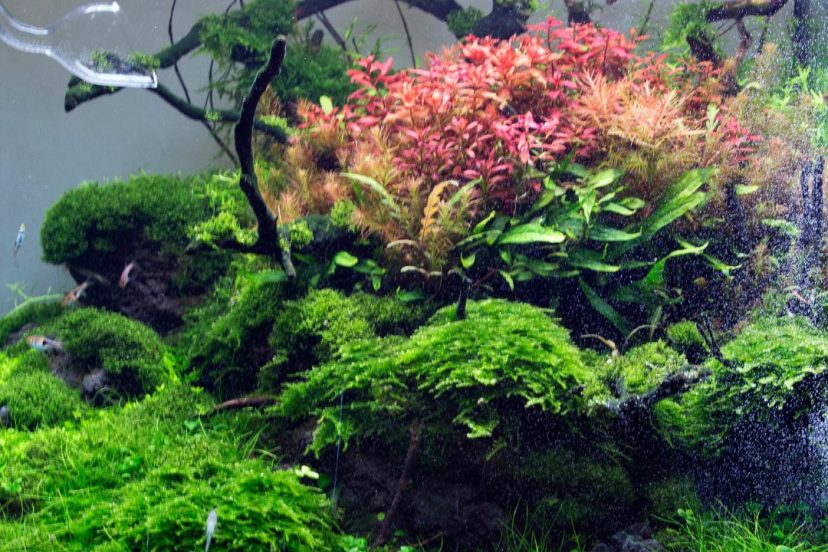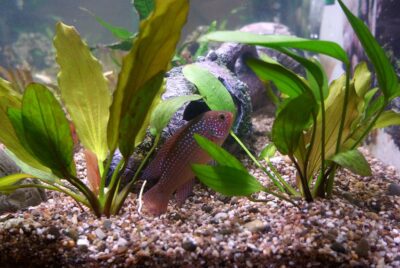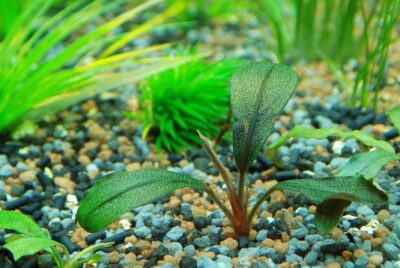How to Plant Aquarium Plants in Gravel
As a seasoned aquarium enthusiast and advisor, I know how vital aquarium plants can be for an aquarium’s health. A common question that arises frequently is “How to plant aquarium plants in gravel?” In this comprehensive article, I will provide helpful suggestions on how to plant aquarium plants in gravel in a detailed and SEO optimized format.
Plus, I’ve added additional information that includes an in-depth explanation of the benefits of having aquarium plants, selecting aquarium plants, preparing for planting, the actual process of planting in gravel, recommended gravel depth, adding fertilizer to the gravel bed, maintenance tips, common mistakes people make when planting aquarium plants in gravel, and troubleshooting tips for aquarium plants in gravel.
The Benefits of Having Aquarium Plants
Aquarium plants provide several benefits and enhance the beauty of your aquarium while improving the ecosystem’s health. By introducing aquarium plants, you can create biological, chemical, and physical balance in your aquarium. The following are benefits of having aquarium plants.
Aquatic Plants Produce Oxygen and Absorb Carbon Dioxide
Aquarium plants absorb carbon dioxide and release breathable oxygen, which creates a healthy and balanced environment for the fish. In the absence of aquatic plants, other organisms would compete for oxygen, creating a stressful environment for fish and other aquatic organisms.
Plants Help Maintain Water Chemistry Balance
Aquarium plants assist in stabilizing the water’s pH level in the aquarium and take up nitrogenous waste and other harmful chemicals like ammonia from the water.
Aquarium Plants Create Natural Hideouts for Fish
It provide shelter and create a natural habitat that mimics their natural environment for small fish. It is essential for fish to feel they have a safe haven within the aquarium’s enclosure, and aquatic plants provide that.
Water Consistency Is More Stable with the Presence of Aquarium Plants
By slowing down the movement of water as it passes through the root systems of the aquarium plants, aquarium plants help stabilize the water temperature.
Selecting Aquarium Plants for a Gravel Bed
Before planting aquarium plants in gravel, you need to select suitable plants that can thrive in a gravel bed. Some aquarium plants suitable for gravel include Anubias, Java Fern, Java Moss, Cryptocoryne, and Amazon Sword. However, it is essential to note that there are two types of aquarium plants: anchored aquarium plants and non-anchored aquarium plants. Understanding the differences between these two types of aquarium plants is vital when planning to have aquarium plants.
Anchored Aquarium Plants
Anchored aquarium plants have roots that anchor the plants and can grow directly into the substrate. If you choose to add anchored aquarium plants, you need to ensure you have a suitable gravel size. It would be best if you used a coarse gravel size to allow root growth and proper water circulation.
Non-Anchored Aquarium Plants
Non-anchored aquarium plants require a robust bottom or a plant weight to keep them in place. This type of aquarium plant may be more delicate as they should maintain their tightness with the bottom and not float to the surface.
Preparing for Planting Aquarium Plants in Gravel
Before planting aquarium plants in gravel, you need to prepare the gravel bed. Here are some of the ways that you can get your gravel bed ready.
Cleaning Gravel
Start by cleaning the gravel bed to remove any debris or dirt from the gravel bed.
Rinse Gravel Under Running Water
Rinse the gravel thoroughly in running water to remove any dust or contaminants that may harm the plants.
Sifting Debris
Using a colander or a sifter, you can remove small particles from the gravel that may not be easy to rinse off.
How to Plant Aquarium Plants in Gravel
Once you have your aquarium plants and the gravel bed is ready, you can begin planting the aquarium plants in gravel.
Arranging Aquarium Plants
Begin by arranging your selected aquarium plants in the desired location in the gravel bed.
Digging Small Holes for the Plant Roots
With your fingers or a small stick, dig small holes and gently place the plant’s roots into the hole.
Covering the Roots with Gravel
Cover the roots with gravel to stabilize the aquarium plant.
Space Between the Aquarium Plants
Ensure that you plant the aquarium plants according to their respective heights and leave enough space for each aquatic plant to grow and spread out.
Recommended Gravel Depth
The recommended gravel depth for planting aquarium plants should be at least 2 inches deep. This helps to provide a good planting surface and enough space for the plant’s roots to grow and stabilize.
Significance of Gravel Depth
Gravel depth plays a crucial role in the type of aquarium plants you choose to have. Different aquarium plants require different substrate depths. Having a thicker or thinner layer of gravel can lead to poor growth or instability for the aquatic plants.
Adding Fertilizer to the Gravel Bed
To promote plant growth, you can add fertilizer to the gravel bed. Before adding any fertilizer to the gravel bed, read the instructions carefully to avoid using too much fertilizer, which can cause an algae bloom and harm the fish.
Types of Fertilizers
There are different types of fertilizers you can add to your aquarium plants. Liquid fertilizers and fertilizer tablets are the most common fertilizer types used for aquarium plants. With proper administration of fertilization, your aquarium plants can bloom and thrive better while maintaining aquatic life balance in the aquarium habitat.
Dosage
Dosage is crucial when adding fertilizers to your aquarium plants. Overuse of fertilizer can become harmful to your aquatic life support. Hence following the required dosage recommendation is crucial for the health and well-being of your aquatic life.
Maintenance Tips for Aquarium Plants in Gravel
Like any other aquarium, to maintain healthy aquarium plants, you need to ensure proper lighting, clean water, and fertilizer if required.
Proper Lighting for Aquarium Plants
Proper lighting is necessary for plant growth for aquarium plants. However, it is vital to note that too intense of lighting can cause algae bloom, affecting the health of your aquarium plants and aquatic life.
Prevent Overgrowth
Pruning and trimming aquatic plants regularly is essential to prevent overgrowth. Ensure that the aquarium plants are not overgrown to provide enough space that the roots need to spread out.
Common Mistakes People Make When Planting Aquarium Plants in Gravel
One common mistake people make when planting aquarium plants in gravel is not choosing suitable plants that can thrive in a gravel bed. Another mistake is not cleaning the gravel bed properly, which can lead to debris and harmful bacteria accumulation. Also, overfeeding the fish can cause an increase in waste, which can harm the plants and the fish if left unmanaged.
Troubleshooting Tips for Aquarium Plants in Gravel
If you notice that your aquarium plants are looking dehydrated, yellowing, or stunted, you can troubleshoot by checking the plant’s roots, adjusting the lighting, and ensuring clean water. Additionally, you can add fertilizer or CO2 to the water for plant growth, but only in moderation.
Root Check
When plants start looking unhealthy, checking the root’s health is the vital first step. Ensure the root is stable, and you may remove dead parts of the aquatic plant.
Adjusting Lighting
If aquarium plants show signs of brown or yellow leaves, you may need to reduce the lighting or change the spectrum setup in use.
Clean Water
Regular water changes and following the recommended aqua-cleaning schedule is essential to maintain aquatic life support while ensuring excellent plant growth.
CO2 Injection
CO2 is a useful resource for aquarium plants’ flourishing and the appropriate fish’s immune responses flourishing. However, in most cases, CO2 injection should be done cautiously and in the right ratio.
Normal Plant Color
Monitor plants and ensure that the plants’ color remains vibrant. Yellowing or brown discoloration indicates plants’ ill-health status, indicating an issue with aquarium parameters like lighting, water quality and composition or fertilization.
Conclusion
Planting aquarium plants in gravel is a great way to enhance the beauty of your aquarium and create a healthy ecosystem for your fish and other aquatic life. With the right plants, proper gravel management, and maintenance, you can create a thriving underwater world. Cohesively, you need to use suitable plants, prepare the gravel bed correctly, and provide adequate lighting, clean water, and nutrients. Remember that aquarium plants help maintain natural aquatic life support while adding significant beauty elements to aquatic life lovers.
Can I use sand instead of gravel for planting aquarium plants?
Yes, sand fairly offers the same use as gravel, and some plants require it as their substrate.
Can plants add oxygen to an aquarium water tank?
Yes, plants produce oxygen and absorb carbon dioxide, regulating a proper aquatic life support balance.
Can I plant aquarium plants directly into the water without gravel?
No, plants require a substrate to anchor their roots, providing a surface to grow while maintaining a healthy anchor on the water of the container.
Do aquarium plants require added CO2 to flourish?
Aquarium plants require CO2 as one of the significant nutrients for their flourishing and growth.
Can I add too much fertilizer to my aquarium plants?
Yes, adding too much fertilizer can lead to an algae bloom, which can harm the plants and the fish. It is essential to read the instructions carefully before adding fertilizer.




